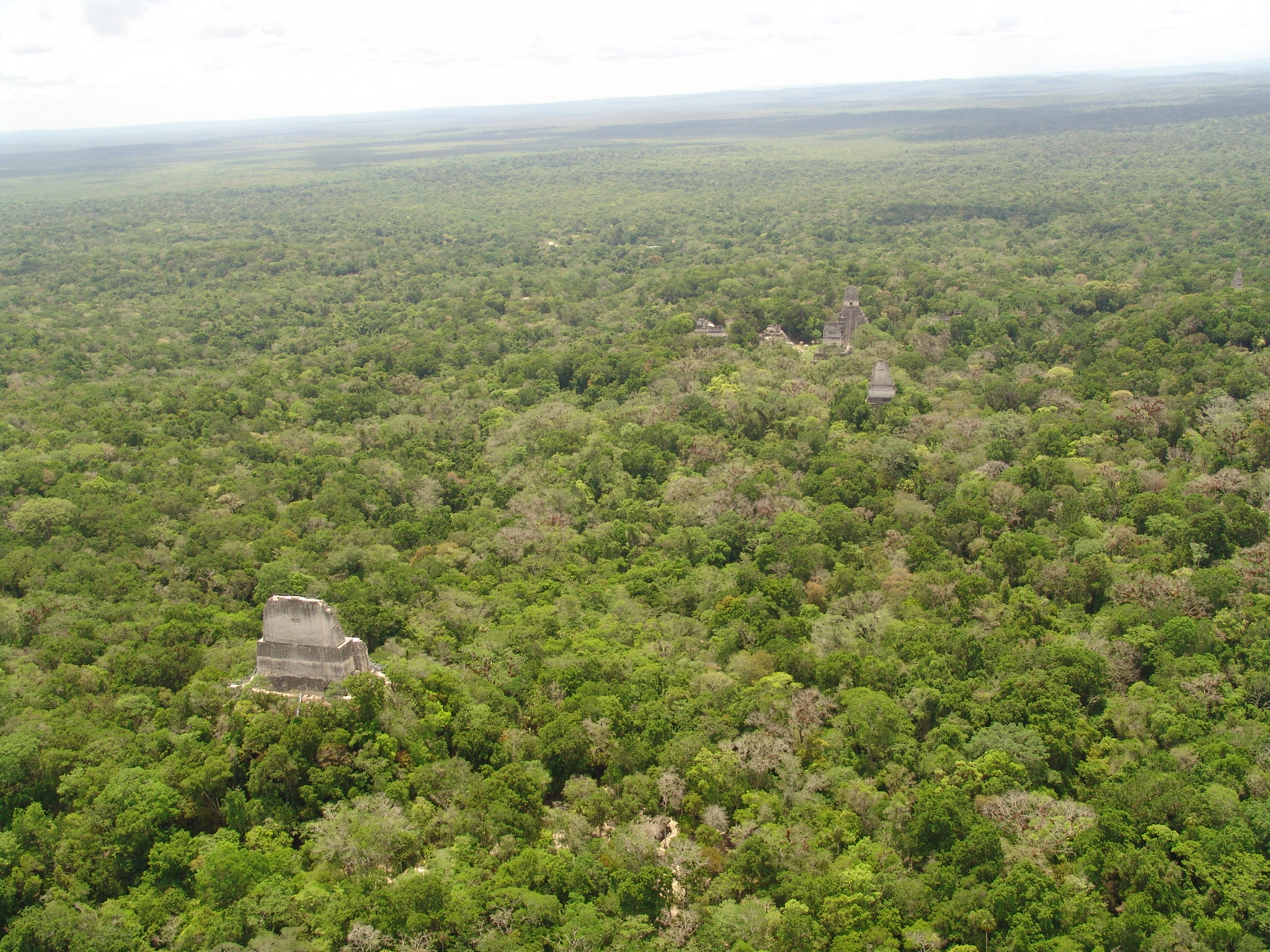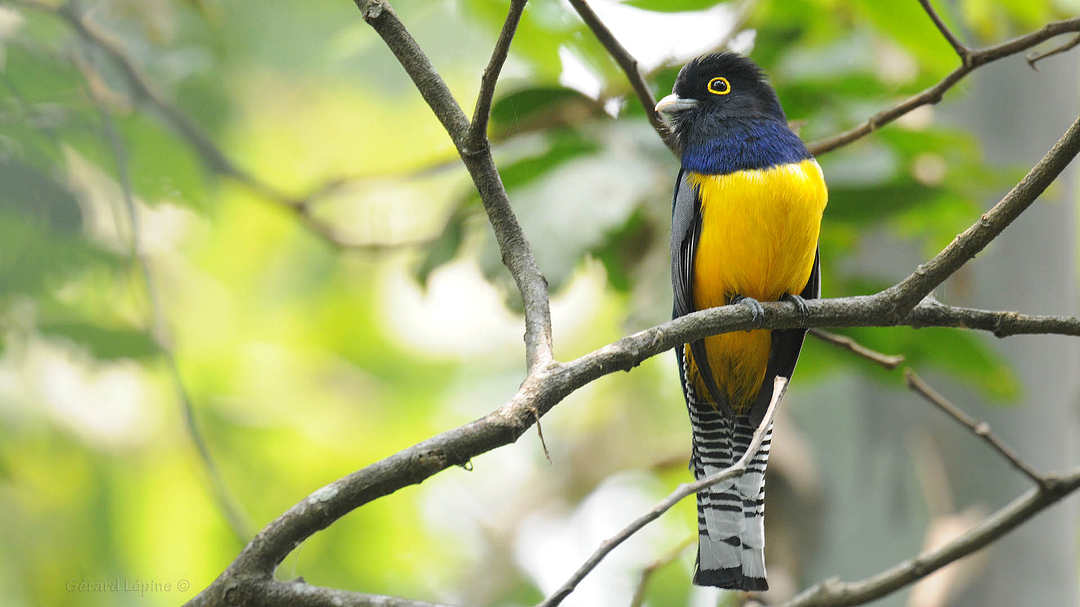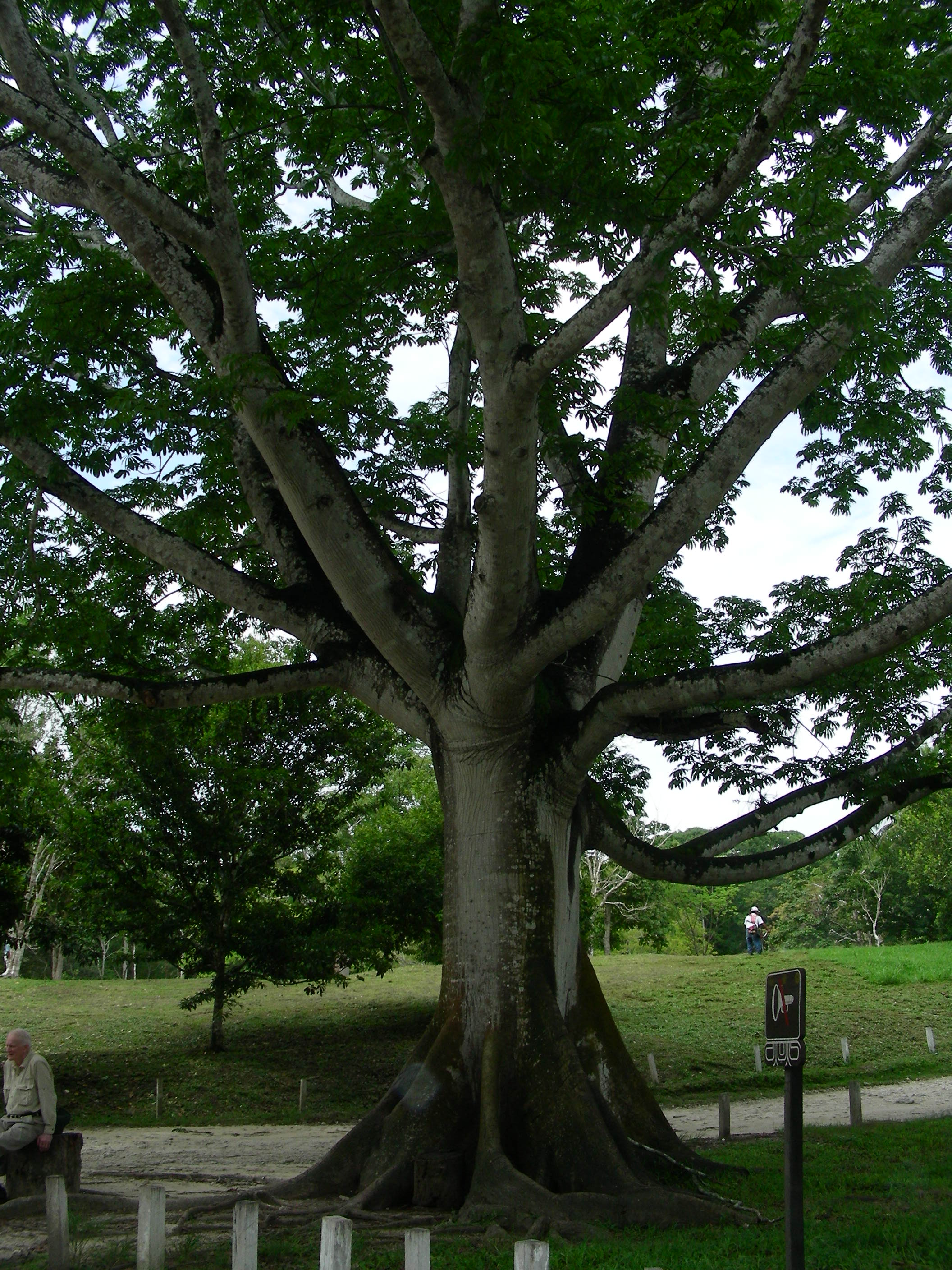
| Tikal Scientific Information Center |
| Tikal's Meteorological Information | Tikal's Hydrology | Tikal's Ecology | Tikal's Flora | Tikal's Fauna |
Ecology at the Tikal National Park in Guatemala
The Tikal National Park is an area at the heart of the Maya Biosphere Reserve in the Peten province in northern Guatemala. About 70% of El Peten is still covered by primary forest with a canopy that reaches 50 meters (164 ft) above the ground, and is made up mainly of trees such as ceiba, mahogany and sapodilla. At Tikal, the temperature is usually above 25°C (annual average) and rainfall is usually around 1281 mm per year. So it is hot and humid all at once.
The Maya Biosphere Reserve, along with the Calakmul and the Montes Azules Biosphere Reserves (both in Mexico), represent the second largest tract of forest in the American continent after the Amazon jungle in Brazil. Most of the Maya Biosphere Reserve, in Guatemala, remains miraculously unfazed, inspite of extended forest fires during the dry season and threats derived from widespread poverty in Guatemala (land invasions). However, recent oil discoveries and new immigrants, who have arrived in the Peten territory, pose serious challenges and constraints on the Laguna del Tigre National Park, the largest nucleus zone in the Maya Biosphere Reserve and the most extended national park in Guatemala.
However, the eastern half of the reserve, where the Tikal and El Mirador-Rio Azul National Parks are, is still an ecological paradise. The Peten forest extends toward the east until it reaches the Mexican border, where it merges with the Lacandon Montes Azules rainforest and north toward the Calakmul region, it borders to the west with important conservation units in Belize (Rio Bravo Conservation Area) which continue to the Maya Mountains reaching the Caribbean coast. Altogether, the Maya Jungle is an unofficial trinational conservation area of over 5 million hectares, including the buffer and multiple use zones, sourrounding the nucleus zones, where national parks make up the protected area system, which holds an amazing biodiversity.
Hundreds of species of trees, animals and plants make up this huge megadiverse area that still needs to be fully explored and understood. Although there have been some exciting archaeological discoveries and while funding for conservation and biological studies are reduced, we hope that the advancement of the biological sciences can go hand in hand with the archaeology, as despite its size and diversity this forest is surprisingly fragile. It is an important component of the cultural system that led to the development of one of the world's most amazing ancient civilizations, the Maya civilization.
It is a dynamic system in which nutrients are continuously recycled and decaying matter fuels new growth. The forest floor is a spongy mass of roots, mushrooms, moss, bacteria and micro-organisms in which the nutrients are stored, broken down with the help of insects, and by way of chemical reactions. This is called the decomposing layer, where nutrients are gradually released for the root system to absorb and for fresh seedlings to beging growing.
The jungle depends on its continuity and integrity to sustain itself and the growth of the shrub layer, that grows between the decomposing layer and the canopy. The shrub layer is what gives the jungle its characteristic feel of being completely sorounded by vegetation.
The thick canopy overhead prevents light from reaching the jungle's floor, making it remain hot and humid, sharply contrasting with the desert-like plants (cacti) that grow right above the canopy, where it is hot an dry.
The death of a large tree prompts a flurry of growth as new light reaches the forest floor, and in no time at all a young tree rises to fill the gap. But once the trees are removed the soil is rendered highly vulnerable, deprived of its main source of fertility. Exposed to the harsh tropical sun and direct rainfall, an area of cleared forest soon becomes prone to flooding and drought.

The TIKAL National Park, which encompasses 583 km2 (222 sq. miles), is a nucleus zone within the Maya Biosphere Reserve, created in 1990, although the park was declared a national park in 1955.
In its undisturbed state, such as in the Tikal National Park the rainforest is superbly beautiful and is home to an incredible abundance of wildlife. Ocellated turkey, toucans, motmots, several species of parrot -including the Aztec parrot and Green parakeets, as well as hawks are all common in Tikal. Amongst the mammals you’ll find are jaguars, peccary, brocket deer, weasels, pumas, ocelots, armadillos and two species of monkey, including spiders and howlers. The massive tapir (mountain cow) plunders through the forest. According to Holdridge (1967) central Peten lies in a transitional area between the tropical dry and the tropical moist semi deciduous forests. Cyrus L. Lundell (1937) refers to the Peten forest as a quasi-rainforest, suggesting the presence of the flora and fauna, as well as the structural and rainfall characteristics of a typical rainforest, but to a lesser degree than found in most equatorial rainforests.
Conservation is a complex but rewarding process that takes a huge effort and a very big investment, while deforestation and desertification are guaranteed if we do not preserve our biodiversity, as if you eliminate the forest, the decomposing layer would dissapear and the cacti (which are already there) would take root on what once was the jungle floor.

Violaceous trogon Trogon violaceus
Unfortunately, slash and burn agriculture and clear-cutting outside the park have drastically reduced the more productive primary forests to a mosaic pattern of forest fragments. Therefore, the species that prefer clearings, second-growth forests and other disturbed habitats are found in greater abundance, such as Great-tailed Grackles, Black Vultures and Cattle Egrets. Conversely, several primary forest-dependent species seem to be experiencing dramatic declines in their relative abundances, such as the Orange-Breasted Falcon or the Spotted Wood-Quail.
No investment may be too big if we consider the expected results of sustainable development and growth in harmony with nature in the Maya Biosphere Reserve. Our company Ecotourism & Adventure Specialists and tikalpark.com is 100% committed to this effort to preserve the jungle in and around the Tikal and Mirador-Rio Azul National Parks. Your visit helps fuel this inspiration and create opportunities for biologists and professionals who take preserving our biodiversity very seriously! Learn more about the programmes we promote together with the Association for the Development of the Maya World and contribute to the long-term goals of research, preservation and sustainability.

The Ceiba pentandra is Guatemala´s national tree.

Ecology: The scientific study of the processes influencing the distribution and abundance of organisms, the interactions among organisms, and the interactions between organisms and the transformation and flux of energy and matter.
Conservation: The protection of plants and animals, natural areas, and interesting and important structures and buildings, especially from the damaging effects of human activity.

We hope you will enjoy www.tikalpark.com and its Spanish version www.parque-tikal.com
For reservations or more information write to us at tikalpark@tikalpark.com.


| Home | Arts | Sciences | Transportation | Lodging | Special Tours | Birding Tours | Tours | Map | About Us | e-mail us | Site Map |